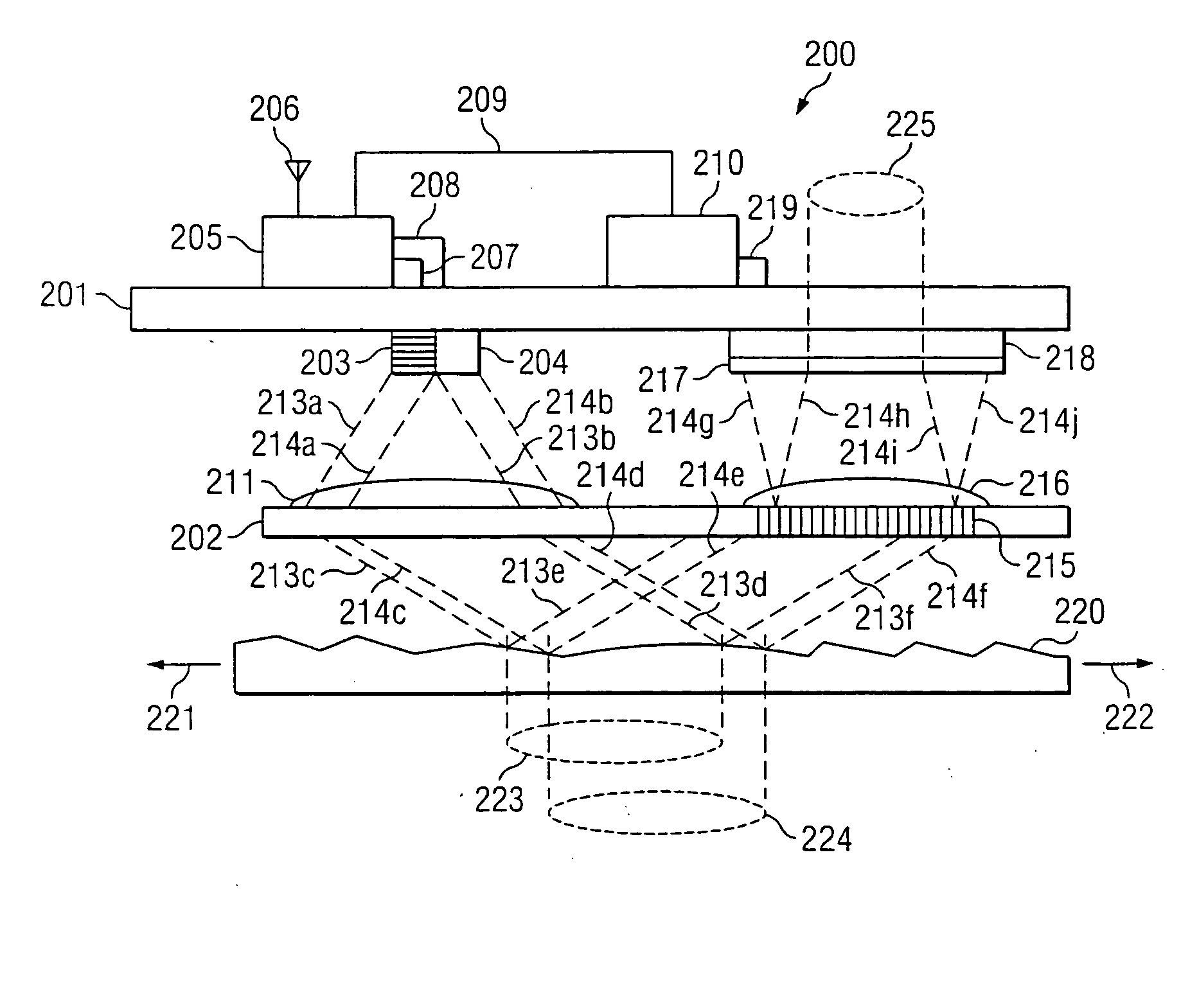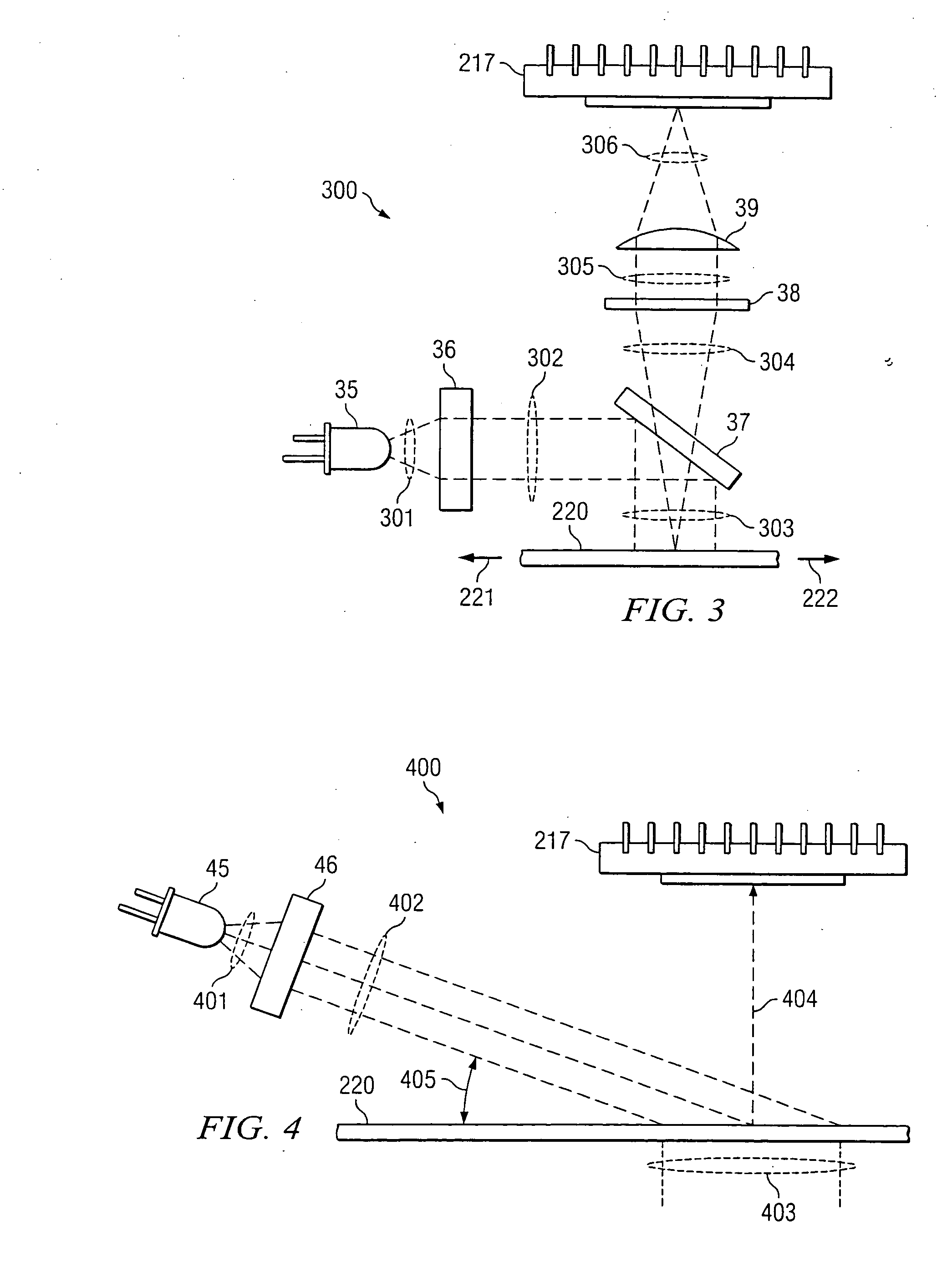Low power consumption, broad navigability optical mouse
a mouse and wide-ranging technology, applied in the field of motion-detecting optical devices, can solve the problems of painting metal and present functional challenges to typical current optical navigation devices
- Summary
- Abstract
- Description
- Claims
- Application Information
AI Technical Summary
Problems solved by technology
Method used
Image
Examples
embodiment 400
[0037]FIGS. 3 and 4 are diagrams depicting detector 217 associated with illumination optics, for example, in source module 103. FIG. 4 depicts illumination at grazing angle 405. FIG. 3 shows illumination by incoherent light source 35 in source module 103, which is directed normal to the surface of the navigation terrain 220. If navigation terrain 220 contains paper fibers to be detected by detector array 217, illumination at grazing angle of incidence 405 is typically desired. While not essential, one or more light emitting diodes (LEDs) 45 may be used in source module 103. Illumination source 35 and / or 45 may each, for example include a plurality of individual illumination elements. Grazing angle 405, which is the complement of the angle of incidence, is typically in the range of five degrees to twenty degrees, but may vary depending upon the properties of navigation terrain 220. In illumination embodiment 400 depicted in FIG. 4, source 45 is shown with illumination optics 46, whic...
embodiment 300
[0038] In illumination embodiment 300 depicted in FIG. 3, light 301 from LED source 35 is collimated by illumination optics 36, and collimated beam 302 is then redirected by optical amplitude beam-splitter 37. For clarity, that portion of the light energy from LED 35 directed to and transmitted through beam-splitter 37 is not shown in FIG. 3. Light energy 303 reflected from beam-splitter 37 illuminates navigation terrain 220 normal to the surface.
[0039] Also represented in FIG. 3 is the portion of light energy 304 that is reflected or scattered from navigation terrain 220 and passed through beam-splitter 37 for aperturing and filtering at element 38 into filtered beam 305. Filtered beam 305 is then directed by navigation optics 39 into detected beam 306 to form a pattern on detector array 217. For clarity, the portion of light energy passing from navigation terrain 220 to beam-splitter 37 and reflecting from the beam-splitter is not shown. The magnification of navigation optics 39 i...
PUM
 Login to View More
Login to View More Abstract
Description
Claims
Application Information
 Login to View More
Login to View More - R&D
- Intellectual Property
- Life Sciences
- Materials
- Tech Scout
- Unparalleled Data Quality
- Higher Quality Content
- 60% Fewer Hallucinations
Browse by: Latest US Patents, China's latest patents, Technical Efficacy Thesaurus, Application Domain, Technology Topic, Popular Technical Reports.
© 2025 PatSnap. All rights reserved.Legal|Privacy policy|Modern Slavery Act Transparency Statement|Sitemap|About US| Contact US: help@patsnap.com



